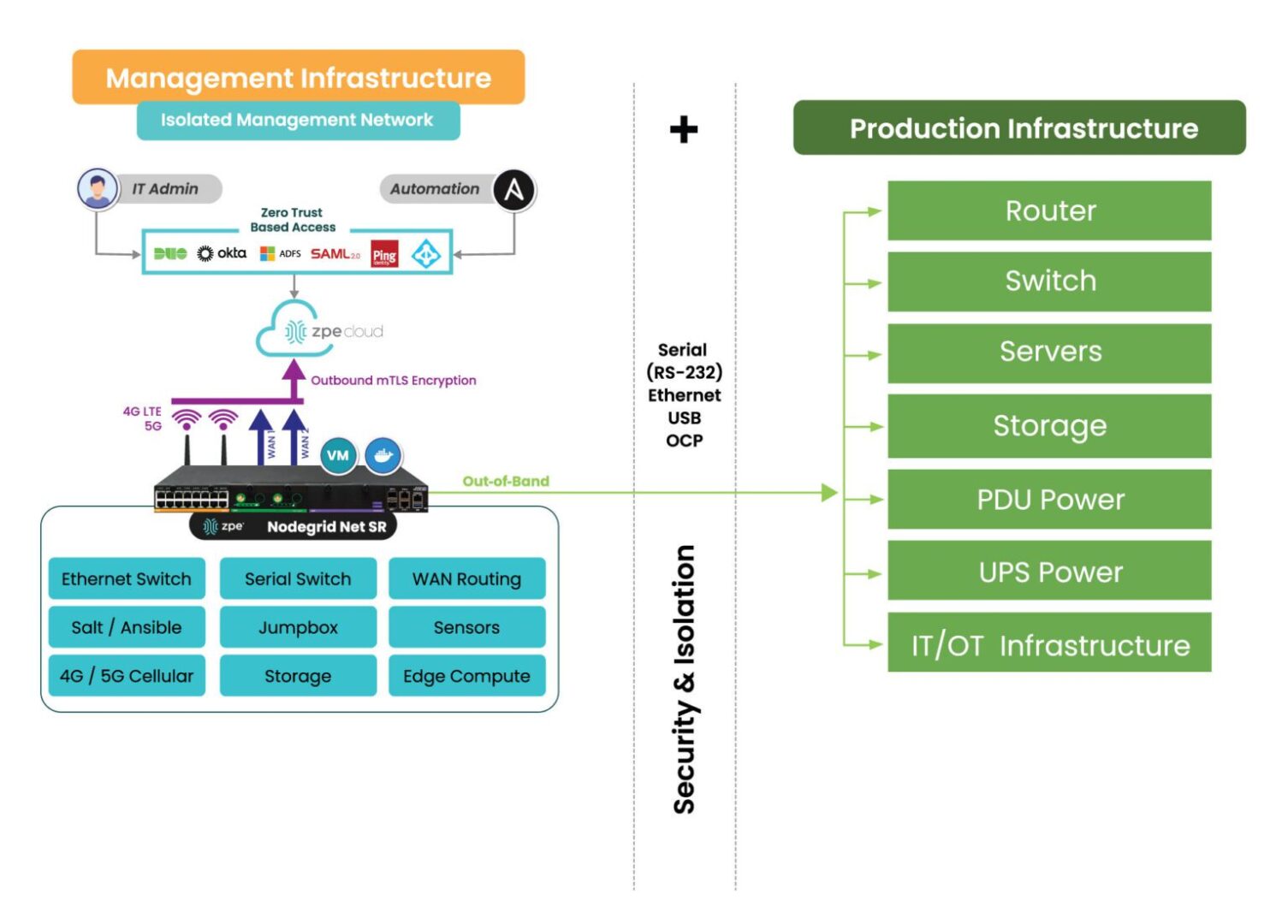
The Shift from Cloud to On-Premises
Cloud computing has been the go-to solution for businesses seeking scalability, flexibility, and cost savings. But according to a 2024 IDC survey, 80% of IT decision-makers expect to repatriate some workloads from the cloud within the next 12 months. As businesses mature in their digital journeys, they’re realizing that the cloud isn’t always the most effective – or economical – solution for every application.
This trend, known as cloud repatriation, is gaining momentum.
Key Takeaways From This Article:
- Cloud repatriation is a strategic move toward cost control, improved performance, and enhanced compliance.
- Performance-sensitive and highly regulated workloads benefit most from on-prem or edge deployments.
- Hybrid and multi-cloud strategies offer flexibility without sacrificing control.
- ZPE Systems enables enterprises to build and manage cloud-like infrastructure outside the public cloud.
What is Cloud Repatriation?
Cloud repatriation refers to the process of moving data, applications, or workloads from public cloud services back to on-premises infrastructure or private data centers. Whether driven by cost, performance, or compliance concerns, cloud repatriation helps organizations regain control over their IT environments.
Why Are Companies Moving Back to On-Prem?
Here are the top six reasons why companies are moving away from the cloud and toward a strategy more suited for optimizing business operations.
1. Managing Unpredictable Cloud Costs
While cloud computing offers pay-as-you-go pricing, many businesses find that costs can spiral out of control. Factors such as unpredictable data transfer fees, underutilized resources, and long-term storage expenses contribute to higher-than-expected bills.
Key Cost Factors Leading to Cloud Repatriation:
- High data egress and transfer fees
- Underutilized cloud resources
- Long-term costs that outweigh on-prem investments
By bringing workloads back in-house or pushed out to the edge, organizations can better control IT spending and optimize resource allocation.
2. Enhancing Security and Compliance
Security and compliance remain critical concerns for businesses, particularly in highly regulated industries such as finance, healthcare, and government.
Why cloud repatriation boosts security:
- Data sovereignty and jurisdictional control
- Minimized risk of third-party breaches
- Greater control over configurations and policy enforcement
Repatriating sensitive workloads enables better compliance with laws like GDPR, CCPA, and other industry-specific regulations.
3. Boosting Performance and Reducing Latency
Some workloads – especially AI, real-time analytics, and IoT – require ultra-low latency and consistent performance that cloud environments can’t always deliver.
Performance benefits of repatriation:
- Reduced latency for edge computing
- Greater control over bandwidth and hardware
- Predictable and optimized infrastructure performance
Moving compute closer to where data is created ensures faster decision-making and better user experiences.
4. Avoiding Vendor Lock-In
Public cloud platforms often use proprietary tools and APIs that make it difficult (and expensive) to migrate.
Repatriation helps businesses:
- Escape restrictive vendor ecosystems
- Avoid escalating costs due to over-dependence
- Embrace open standards and multi-vendor flexibility
Bringing workloads back on-premises or adopting a multi-cloud or hybrid strategy allows businesses to diversify their IT infrastructure, reducing dependency on any one provider.
5. Meeting Data Sovereignty Requirements
Many organizations operate across multiple geographies, making data sovereignty a major consideration. Laws governing data storage and privacy can vary by region, leading to compliance risks for companies storing data in public cloud environments.
Cloud repatriation addresses this by:
- Storing data in-region for legal compliance
- Reducing exposure to cross-border data risks
- Strengthening data governance practices
Repatriating workloads enables businesses to align with local regulations and maintain compliance more effectively.
6. Embracing a Hybrid or Multi-Cloud Strategy
Rather than choosing between cloud or on-prem, forward-thinking companies are designing hybrid and multi-cloud architectures that combine the best of both worlds.
Benefits of a Hybrid or Multi-Cloud Strategy:
- Leverages the best of both public and private cloud environments
- Optimizes workload placement based on cost, performance, and compliance
- Enhances disaster recovery and business continuity
By strategically repatriating specific workloads while maintaining cloud-based services where they make sense, businesses achieve greater resilience and efficiency.
The Challenge: Retaining Cloud-Like Flexibility On-Prem
Many IT teams hesitate to repatriate due to fears of losing cloud-like convenience. Cloud platforms offer centralized management, on-demand scaling, and rapid provisioning that traditional infrastructure lacks – until now.
That’s where ZPE Systems comes in.
ZPE Systems Accelerates Cloud Repatriation
For over a decade, ZPE Systems has been behind the scenes, helping build the very cloud infrastructures enterprises rely on. Now, ZPE empowers businesses to reclaim that control with:
- The Nodegrid Services Router platform: Bringing cloud-like orchestration and automation to on-prem and edge environments
- ZPE Cloud: A unified management layer that simplifies remote operations, provisioning, and scaling
With ZPE, enterprises can repatriate cloud workloads while maintaining the agility and visibility they’ve come to expect from public cloud environments.
The Nodegrid platform combines powerful hardware with intelligent, centralized orchestration, serving as the backbone of hybrid infrastructures. Nodegrid devices are designed to handle a wide variety of functions, from secure out-of-band management and automation to networking, workload hosting, and even AI computer vision. ZPE Cloud serves as the cloud-based management and orchestration platform, which gives organizations full visibility and control over their repatriated environments..
- Multi-functional infrastructure: Nodegrid devices consolidate networking, security, and workload hosting into a single, powerful platform capable of adapting to diverse enterprise needs.
- Automation-ready: Supports custom scripts, APIs, and orchestration tools to automate provisioning, failover, and maintenance across remote sites.
- Cloud-based management: ZPE Cloud provides centralized visibility and control, allowing teams to manage and orchestrate edge and on-prem systems with the ease of a public cloud.
Ready to Explore Cloud Repatriation?
Discover how your organization can take back control of its IT environment without sacrificing agility. Schedule a demo with ZPE Systems today and see how easy it is to build a modern, flexible, and secure on-prem or edge infrastructure.
Additional Resources
- Watch: ZPE Cloud Demonstration Presented by Marcel Van Zwienen
- Watch: Making Networks Hard to Fail and Easy to Recover – ZPE Systems at Cisco Live 2024
- Watch: Run your own cloud instance in a box with Nodegrid
- Out-of-Band Deployment Guide
- Why Out-of-Band Management is Critical to AI Infrastructure
- Edge Computing Use Cases By Industry

